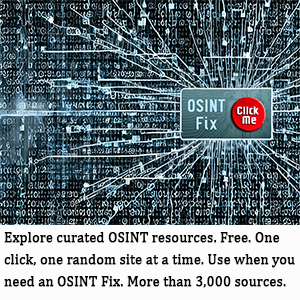Open Source Now for Rich Peeps
December 3, 2025
Once upon a time, open source was the realm of startups in a niche market. Nolan Lawson wrote about “The Fate Of ‘Small’ Open Source” on his blog Read The Tea Leaves. He explains that more developers are using AI in their work and it’s step ahead of how coding used to be in the past. He observed a societal change that has been happening since the invention of the Internet: “I do think it’s a future where we prize instant answers over teaching and understanding.”
Old-fashioned research is now an art that few decide to master except in some circumstances. However, that doesn’t help the open source libraries that built the foundation of modern AI and most systems. Lawson waxes poetic about the ending of an era and what’s the point of doing something new in an old language. He uses a lot of big words and tech speak that most people won’t understand, but I did decipher that he’s upset that big corporations and AI chatbots are taking away the work.
He remains hopeful though:
“So if there’s a conclusion to this meandering blog post (excuse my squishy human brain; I didn’t use an LLM to write this), it’s just that: yes, LLMs have made some kinds of open source obsolete, but there’s still plenty of open source left to write. I’m excited to see what kinds of novel and unexpected things you all come up with.”
My squishy brain comprehends that the future is as bleak as the present but it’s all relative and how we decide to make it.
Whitney Grace, December 3, 2025
Another Better, Faster, Cheaper from a Big AI Wizard Type
October 16, 2025
 This essay is the work of a dumb dinobaby. No smart software required.
This essay is the work of a dumb dinobaby. No smart software required.
Cheap seems to be the hot button for some smart software people. I spotted a news item in the Russian computer feed I get called in English “Former OpenAI Engineer Andrey Karpaty Launched the Nanochat Neural Network Generator. You Can Make Your ChatGPT in a Few Hours.” The project is on GitHub at https://github.com/karpathy/nanochat.
The GitHub blurb says:
This repo is a full-stack implementation of an LLM like ChatGPT in a single, clean, minimal, hackable, dependency-lite codebase. Nanochat is designed to run on a single 8XH100 node via scripts like speedrun.sh, that run the entire pipeline start to end. This includes tokenization, pretraining, finetuning, evaluation, inference, and web serving over a simple UI so that you can talk to your own LLM just like ChatGPT. Nanochat will become the capstone project of the course LLM101n being developed by Eureka Labs.
The open source bundle includes:
- A report service
- A Rust-coded tokenizer
- A FineWeb dataset and tools to evaluate CORE and other metrics for your LLM
- Some training gizmos like SmolTalk, tests, and tool usage information
- A supervised fine tuning component
- Training Group Relative Policy Optimization and the GSM8K (a reinforcement learning technique), a benchmark dataset consisting of grade school math word problems
- An output engine.
Is it free? Yes. Do you have to pay? Yep. About US$100 is needed? Launch speedrun.sh, and you will have to be hooked into a cloud server or a lot of hardware in your basement to do the training. A low-ball estimate for using a cloud system is about US$100, give or take some zeros. (Think of good old Amazon AWS and its fascinating billing methods.) To train such a model, you will need a server with eight Nvidia H100 video cards. This will take about 4 hours and about $100 when renting equipment in the cloud. The need for the computing resources becomes evident when you enter the command speedrun.sh.
Net net: As the big dogs burn box cars filled with cash, Nanochat is another player in the cheap LLM game.
Stephen E Arnold, October 16, 2025
China Smart, US Dumb: Is There Any Doubt?
August 1, 2025
 This blog post is the work of an authentic dinobaby. Sorry. No smart software can help this reptilian thinker.
This blog post is the work of an authentic dinobaby. Sorry. No smart software can help this reptilian thinker.
I have been identifying some of the “China smart, US dumb” information that I see. I noticed a write up from The Register titled “China Proves That Open Models Are More Effective Than All the GPUs in the World.” My Google-style Red Alert buzzer buzzed and the bubble gum machine lights flashed.
There is was. The “all.” A categorical affirmative. China is doing something that is more than “all the GPUs in the world.” Not only that “open models are more effective” too. I have to hit the off button.
The point of the write up for me is that OpenAI is a loser. I noted this statement:
OpenAI was supposed to make good on its name and release its first open-weights model since GPT-2 this week. Unfortunately, what could have been the US’s first half-decent open model of the year has been held up by a safety review…
But it is not just OpenAI muffing the bunny. The write up points out:
the best open model America has managed so far this year is Meta’s Llama 4, which enjoyed a less than stellar reception and was marred with controversy. Just this week, it was reported that Meta had apparently taken its two-trillion-parameter Behemoth out behind the barn after it failed to live up to expectations.
Do you want to say, “Losers”? Go ahead.
But what outfit is pushing out innovative smart software as open source? Okay, you can shout, “China. The Middle Kingdom. The rightful rulers of the Pacific Rim and Southeast Asia.
That’s the “right” answer if you accept the “all” type of reasoning in the write up.
China has tallied a number of open source wins; specifically, Deepseek, Qwen, M1, Ernie, and the big winner Kimi.
Do you still have doubts about China’s AI prowess? Something is definitely wrong with you, pilgrim.
Several observations:
- The write up is a very good example of the China smart, US dumb messaging which has made its way from the South China Morning Post to YouTube and now to the Register. One has to say, “Good work to the Chinese strategists.”
- The push for open source is interesting. I am not 100 percent convinced that making these models available is intended to benefit non-Middle Kingdom people. I think that the push, like the shift to crypto currency in non traditional finance, is part of an effort to undermine what might be called “America’s hegemony.”
- The obviousness of overt criticism of OpenAI and Meta (Facebook) illustrates a growing confidence in China that Western European information channels can be exploited.
Does this matter? I think it does. Open source software has some issues. These include its use as a vector for malware. Developers often abandon projects, leaving users high and dry with some reaching for their wallet to buy commercial solutions. Open source projects for smart software may have baked in biases and functions that are not easily spotted. Many people are aware of NSO Group’s ability to penetrate communications on a device by device basis. What happens if the phone home ability is baked into some open source software.
Remember that “all.” The logical fallacy illustrates that some additional thinking may be necessary when it comes to embedding and using software from some countries with very big ambitions. What is China proving? Could it be China smart, US dumb?
Stephen E Arnold, August 1, 2025
Can AI Do What Jesus Enrique Rosas Does?
July 8, 2025
 Just a dinobaby without smart software. I am sufficiently dull without help from smart software.
Just a dinobaby without smart software. I am sufficiently dull without help from smart software.
I learned about a YouTube video via a buried link in a story in my newsfeed. The video is titled “Analysis of Jeffrey Epstein’s Cell Block Video Released by the FBI.” I know little about Mr. Rosas. He is a body language “expert.” I know zero about this field. He gives away a book about body language, and I assume that he gets inquiries and sells services. He appears to have developed what he calls a Knesix Code. He does not disclose his academic background.
But …
His video analysis of the Epstein surveillance camera data makes clear that Sr. Rosas has an eye for detail. Let me cite two examples:
First, he notes that in some of the footage released by the FBI, a partial image of a video editing program’s interface appears. Not only does it appear, but the image appears in several separate sectors of the FBI-released video. Mr. Rosas raises the possibility that the FBI footage (described as unaltered) was modified.
Here is an example of that video editing “tell” or partial image:
Second, Sr. Rosas spots a time gap in the FBI video. Here’s where the “glitch” appears:
How much is missing from the unedited video file? More than a minute.
Observations:
- I feed the interface image into a couple of smart software systems. None was able to identify the specific program’s interface from the partial image
- Mr. Rosas’ analysis identified two interesting anomalies in the video
- The allegedly unedited video appears to have been edited.
Net net: AI is not able to do what Sr. Rosas did. I do not want to speculate how “no videos” became this one video. I do not want to speculate why an unedited video contains two editing indications. I don’t want to think much about Jeffrey Epstein, the kiddie trafficking, and the individuals associating with him. I will stick with my observation, “AI does not seem to have the ability to do what Sr. Rosas did.”
Stephen E Arnold, July 8, 2025
Teams Today, Cloud Data Leakage Tomorrow Allegations Tomorrow?
June 27, 2025
 An opinion essay written by a dinobaby who did not rely on smart software .
An opinion essay written by a dinobaby who did not rely on smart software .
The creep of “efficiency” manifests in numerous ways. A simple application becomes increasingly complex. The result, in many cases, is software that loses the user in chrome trim, mud flaps, and stickers for vacation spots. The original vehicle wears a Halloween costume and can be unrecognizable to someone who does not use the software for six months and returns to find a different creature.
What’s the user reaction to this? For regular users, few care too much. For a meta-users — that is those who look at the software from a different perspective; for example, that of a bean counter — the accumulation of changes produces more training costs, more squawks about finding employees who can do the “work,” and creeping cost escalation. The fix? Cheaper or free software. “German Government Moves Closer to Ditching Microsoft: “We’re Done with Teams!” explains:
The long-running battle of Germany’s northernmost state, Schleswig-Holstein, to make a complete switch from Microsoft software to open-source alternatives looks close to an end. Many government operatives will permanently wave goodbye to the likes of Teams, Word, Excel, and Outlook in the next three months in a move to ensure independence, sustainability, and security.
The write up includes a statement that resonates with me:
Digitalization Minister Dirk Schroedter has announced that “We’re done with Teams!”
My team has experimented with most video conferencing software. I did some minor consulting to an outfit called DataBeam years and years ago. Our experience with putting a person in front of a screen and doing virtual interaction is not something that we decided to use in the lock down days. Nope. We fiddled with Sparcs and the assorted accoutrements. We tried whatever became available when one of my clients would foot the bill. I was okay with a telephone, but the future was mind-addling video conferences. Go figure.
Our experience with Teams at Arnold Information Technology is that the system balks when we use it on a Mac Mini as a user who does not pay. On a machine with a paid account, the oddities of the interface were more annoying than Zoom’s bizarre approach. I won’t comment about the other services to which we have access, but these too are not the slickest auto polishes on the Auto Zone’s shelves.
Digitalization Minister Dirk Schroedter (Germany) is quoted as saying:
The geopolitical developments of the past few months have strengthened interest in the path that we’ve taken. The war in Ukraine revealed our energy dependencies, and now we see there are also digital dependencies.
Observations are warranted:
- This anti-Microsoft stance is not new, but it has not been linked to thinking in relationship to Russia’s special action.
- Open source software may not be perfect, but it does offer an option. Microsoft “owns” software in the US government, but other countries may be unwilling to allow Microsoft to snap on the shackles of proprietary software.
- Cloud-based information is likely to become an issue with some thistles going forward.
The migration of certain data to data brokers might be waiting in the wings in a restaurant in Brussels. Someone in Germany may want to serve up that idea to other EU member nations.
Stephen E Arnold, June 27, 2025
The UN Invites Open Source and UN-invites Google
June 3, 2025
The United Nations is tired of Google’s shenanigans. Google partnered with the United Nations to manage their form submissions, but the organization that acts as a forum for peace and dialogue is tired of Alphabet Inc. It’s Foss News explains where the UN is turning to for help: “UN Ditches Google For Taking Form Submissions, Opts For An Open Source Solution Instead.” The UN won’t be using Google for its form submissions anymore. The organization has switched to open source and will use CryptPad for submission forms.
The United Nations is promoting the adoption of open source initiatives while continuing to secure user data, ensure transparency, and encourage collaboration. CryptPad is a privacy-focused, open source online collaboration office suite that encrypts its content, doesn’t log IP addresses, and includes collaborative documents and other tools.
The United Nations is trying to step away from Big Tech:
“So far, the UN seems to be moving in the correct direction with their UN Open Source Principles initiative, ditching the user data hungry Google Form, and opting for a much more secure and privacy-focused CryptPad.
They’ve already secured the endorsement of sixteen organizations, including notable names like The Document Foundation, Open Source Initiative, Eclipse Foundation, ZenDiS, The Linux Foundation, and The GNOME Foundation.
I sincerely hope the UN continues its push away from proprietary Big Tech solutions in favor of more open, privacy-respecting alternatives, integrating more of their workflow with such tools.” “No Google” would have been unthinkable 10 years ago. Today it’s not just thinking; it is de-Googling. And the open source angle. Is this a way to say, “US technology companies seem to be a bit of a problem?”
Whitney Grace, June 3, 2025
Microsoft: Did It Really Fork This Fellow?
May 26, 2025
 Just the dinobaby operating without Copilot or its ilk.
Just the dinobaby operating without Copilot or its ilk.
Forked doesn’t quite communicate the exact level of frustration Philip Laine experienced while working on a Microsoft project. He details the incident in his post, “Getting Forked By Microsoft.” Laine invented a solution for image scalability without a stateful component and needed minimal operation oversight. He dubbed his project Spegel, made it open source, and was contacted by Microsoft.
Microsoft was pleased with Spegel. Laine worked with Microsoft engineers to implement Spegel into its architecture. Everything went well until Microsoft stopped working with him. He figured the moved onto other projects. Microsoft did move on but the engineers developed their own version of Spegel. They have the grace to thank Laine and in a README file. It gets worse:
"While looking into Peerd, my enthusiasm for understanding different approaches in this problem space quickly diminished. I saw function signatures and comments that looked very familiar, as if I had written them myself. Digging deeper I found test cases referencing Spegel and my previous employer, test cases that have been taken directly from my project. References that are still present to this day. The project is a forked version of Spegel, maintained by Microsoft, but under Microsoft’s MIT license.”
Microsoft plagiarized…no…downright stole Spegel’s base coding from Laine. He, however, published Spegel with Microsoft’s MIT licensing. The MIT licensing means:
“Software released under an MIT license allows for forking and modifications, without any requirement to contribute these changes back. I default to using the MIT license as it is simple and permissive.”
It does require this:
“The license does not allow removing the original license and purport that the code was created by someone else. It looks as if large parts of the project were copied directly from Spegel without any mention of the original source.”
Laine wanted to work with Microsoft and have their engineers contribute to his open source project. He’s dedicated his energy, time, and resources to Spegel and continues to do so without much contribution other than GitHub sponsors and the thanks of its users. Laine is considering changing Spegel’s licensing as it’s the only way to throw a stone at Microsoft.
If true, the pulsing AI machine is a forker.
Whitney Grace, May 26, 2025
Yo, Open Source Cheerleaders: Department of Defense News
May 21, 2025
Add this to the many changes we have recently seen in the federal government: We learn from Tech Radar, “Pentagon Looks to Shake Up ‘Outdated’ Software Procurement, Declares War on Open Source.” As much as we love open-source software, we know it poses certain security risks for sensitive systems. With an initiative dubbed the Software Fast-Track (SWFT), DOD CIO Katherine Arrington aims to overhaul the department’s software acquisition, authorization, and testing processes. The new framework is to be published by the end of July. Writer Craig Hale reports:
“In the memo, Arrington explained the SWFT Framework will define ‘clear’ and ‘specific’ cybersecurity and Supple Chain Risk Management (SCRM) requirements, rigorous software security verification processes, secure information sharing mechanisms and Federal Government-led risk determinations to expedite the cybersecurity authorizations for rapid software adoption. She continued to explain that current systems are best seen as ‘outdated,’ noting that acquisition processes don’t enable the agility that departments need. Arrington also noted that the use of open source software ‘presents a significant and ongoing challenge,’ with a lack of visibility into the origins and security of software code particularly troubling. Malware and partner leaks have already exposed vulnerabilities in DOD systems, with software vulnerabilities among the most popular entry points for attackers.”
Excellent point. We note the DOD seems to have several goals for this initiative. One can only hope security will take precedence over rapid adoption and penny-pinching. We are curious to see how the agency will save money while shifting away from free software.
Cynthia Murrell, May 21, 2025
France And Germany Form Open Source Writing Collaboration
April 30, 2025
Open source software and AI algorithms are a match made in heaven. You can’t say the same thing about France and Germany when it comes to history, but the countries can put aside their differences (occasionally) to advance technology. The French and German governments came together to design Docs.
Docs is described as “Collaborative writing, simplified-collaborate and write in real time, without layout constraints.” I don’t know if the term “layout” refers to a writing software’s formatting or if it means limited to the constraints of writing software. It could mean either of things or something is lost in the literal translation. Ich habe keine Ahnung. Je ne c’est pas.
Docs is built on the Django Rest Framework and Nest.js. It also uses BlockNote.js and Yes (they also sponsor those text editors too). Docs can be self-hosted, has a business friendly license, and welcomes anyone to contribute to its growth either monetarily or via code). Here is what Docs offers as a writing partner:
“Docs offers an intuitive writing experience. Its minimalist interface favors content over layout, while offering the essentials: media import, offline mode and keyboard shortcuts for greater efficiency.”
So far that sounds très magnifique and ausgezeichnet! Docs also offers simple real-time collaboration. Users on a document can access the same document, see changes made live, and maintain control of the document for data security. Docs also has universal formats for exportation: OpenDocument, Word, and PDF.
A nifty feature unavailable with most writing software is the ability to organize documents into knowledge bases with subpages. This feature also comes with search and pinning capabilities.
This French and German writing collaboration sounds amazing! Break out the champagne and beer and enjoy some croissants and pretzels. This is one open source tool everyone needs!
Whitney Grace, April 30, 2025
Sam Altman: The Waffling Man
February 17, 2025
 Another dinobaby commentary. No smart software required.
Another dinobaby commentary. No smart software required.
Chaos is good. Flexibility is good. AI is good. Sam Altman, whom I reference as “Sam AI-Man” has some explaining to do. OpenAI is a consumer of cash. The Chinese PR push suggests that Deepseek has found a way to do OpenAI-type computing like Shein and Temu do gym clothes.
I noted “Sam Altman Admits OpenAI Was On the Wrong Side of History in Open Source Debate.” The write up does not come out state, “OpenAI was stupid when it embraced proprietary software’s approach” to meeting user needs. To be frank, Sam AI-Man was not particularly clear either.
The write up says that Sam AI-Man said:
“Yes, we are discussing [releasing model weights],” Altman wrote. “I personally think we have been on the wrong side of history here and need to figure out a different open source strategy.” He noted that not everyone at OpenAI shares his view and it isn’t the company’s current highest priority. The statement represents a remarkable departure from OpenAI’s increasingly proprietary approach in recent years, which has drawn criticism from some AI researchers and former allies, most notably Elon Musk, who is suing the company for allegedly betraying its original open source mission.
My view is that Sam AI-Man wants to emulate other super techno leaders and get whatever he wants. Not surprisingly, other super techno leaders have their own ideas. I would suggest that the objective of these AI jousts is power, control, and money.
“What about the users?” a faint voice asks. “And the investors?” another bold soul queries.
Who?
Stephen E Arnold, February 17, 2025




